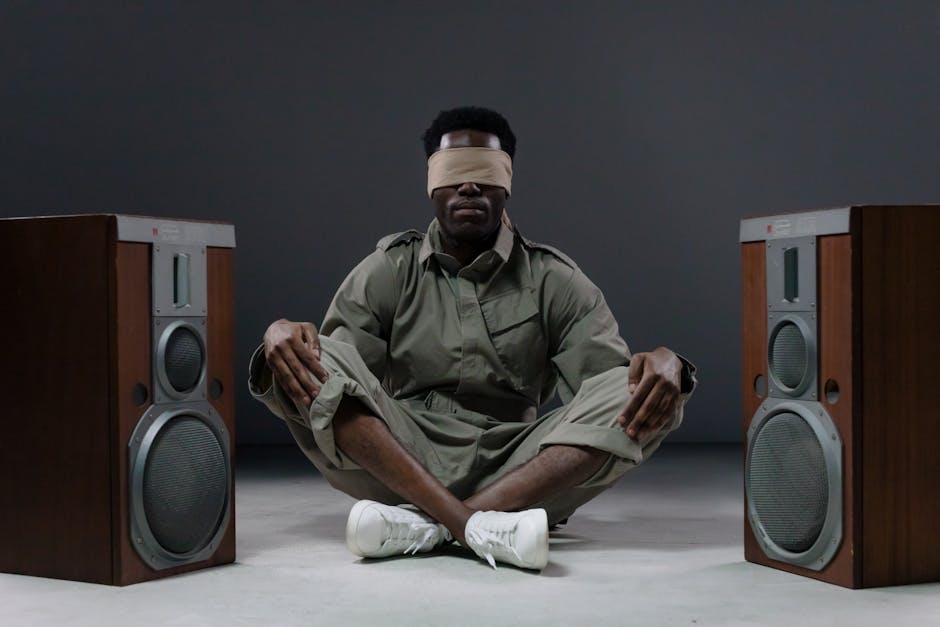How EV Design Trends Shape Urban Aesthetics and Spaces
In an age of innovation where electric vehicles (EVs) are redefining modern mobility, the ripple effects of their design transcend automotive realms, influencing urban architecture and public spaces in profound ways. The visual language of EVs is more than just style; it's a reflection of evolving consumer values that prioritize sustainability, efficiency, and elegance. With every sleek silhouette and sustainable material choice, there's a story of how these vehicles are not merely machines but integral components of our urban landscapes. But how do these trends in automobile aesthetics shape our cities? Let’s explore how electric vehicles are paving the way for an urban renaissance that can redefine public spaces.
The Rise of EV Cultures in Urban Design

As cities grapple with climate change and the urgent need to reduce carbon footprints, the integration of EVs is more crucial than ever. The adoption of these vehicles promotes not only cleaner air but also inspires a shift in architectural aesthetics to support this transition. Roadways, charging stations, and even public parks are evolving to accommodate this green revolution. Public spaces that previously prioritized car-centric designs are at the cusp of transformation, paving the way for greener, more sustainable urban environments.
With the increase in EV adoption, cities are changing the way they allocate resources for infrastructure. Charging stations are being strategically placed in highly trafficked urban locales, turning potential eyesores into community hubs. The designs for these spaces are often influenced by the same principles guiding EV aesthetics: clean lines, functionality, and an emphasis on ecological responsibility.
For insights on how cities adapt to these changes, explore how community EV charging solutions are reconfiguring public spaces to be more user-friendly while promoting a cleaner urban environment.
Aesthetics and Identity: The Emotional Connection

The allure of EVs isn’t merely their eco-friendliness—it's their design. The streamlined aesthetics and futuristic technologies create an emotional connection, promoting a lifestyle that resonates with both the environment and personal values. As consumers increasingly associate electric vehicles with quality of life, urban design is adapting to reflect these ideals.
Take, for instance, the rise of biophilic design—where nature is interwoven with urban settings. Elements such as green roofs, living walls, and gardens are making their way into the designs of public infrastructures that support EVs. This approach not only enhances visual appeal but also contributes positively to mental wellness and biodiversity.
For more on how nature enhances urban living, check out our piece on shaping urban green spaces, where we delve into the relationship between vehicles and nature in modern landscapes.
EV Design Driving Architectural Innovation

In the interplay between automobile aesthetics and architectural trends, themes such as modular design and sustainable materials are becoming mainstream. Architects and urban planners are taking cues from the sleek, minimalist lines of EVs to create structures that echo this simplicity.
For example, the idea of designing charging stations as art pieces in public parks not only serves a functional role but also elevates the urban experience. The aesthetic appeal of these stations, inspired by the clean designs of leading EV brands, can transform everyday locations into artistic landmarks. Large cities are taking these concepts to heart, designing charging stations that blend seamlessly with surrounding architecture while contributing to the overall identity of the area.
The Role of EVs in Public Transit Planning

Imagine a world where EVs serve as the backbone of public transport systems. Cities are increasingly adopting electric buses and autonomous shuttles, shaping how citizens interact with and experience urban environments. The design of public transport is evolving to be more in tune with the principles of sustainability and user comfort, thus creating a new standard for urban mobility.
With EVs leading the charge, adopting eco-friendly materials and design principles in public transit infrastructure reflects a community's commitment to sustainability. Transit hubs are becoming integrated spaces featuring bike-sharing facilities, green areas, and waiting stations clad in sustainable materials—ideals mirrored by the aesthetics of cutting-edge electric vehicles.
For more on how electric vehicles impact public transportation, check out our article on urban green fleets.
The Culture of Sharing and Mobility: Redefining Space

The advent of car-sharing and ride-hailing services built around electric vehicles has revolutionized mobility in urban settings. This shift not only alleviates congestion but also encourages cities to rethink their spatial layouts. Open parking lots and roads designed primarily for car ownership give way to multi-modal transportation options.
In this context, urban design becomes more about facilitating interaction and community connections than merely catering to vehicles. Events, markets, and public gatherings can replace parking spaces as communities embrace shared mobility. The essence of urban planning is progressively rooted in human connection, fostering social interaction rather than isolating individuals in their cars.
The transition from a car-centric society to one that emphasizes interconnected mobility solutions has profound implications for how urban spaces are designed. Curious about this shift? Read our exploration of pop-up mobility solutions and how they transform daily life.
The Shift in Policy and Incentives

As urban areas adopt policies to encourage EV usage, there’s an interesting interplay between design and regulation. Incentives offered to promote EV ownership in cities lead to changes in public interest and engagement. Cities can become vibrant ecosystems where individuals feel empowered to make sustainable choices.
Public policies are driving a shift toward electric vehicle-friendly infrastructure—from dedicated lanes to integrated charging stations—and these decisions reflect the changing expectations regarding urban aesthetics. Policymakers and planners are increasingly aware that aesthetics and functionality go hand in hand.
Public art installations, green zones, and innovative street furniture work together to create inviting cityscapes that marry form and function. In this way, design becomes not just an afterthought but an essential part of the urban environment that influences behavior and interaction.
To stay abreast of evolving policies shaping urban design, check relevant resources such as articles found on the Harvard Business Review site.
Tech Meets Eco-Consciousness: Designing Urban Ecosystems

The integration of technology into EVs is setting benchmarks for how cities can leverage digital innovations for architectural design. With smart charging solutions, renewable energy, and enhanced connectivity, urban spaces are evolving into interactive ecosystems that prioritize not just aesthetics but also sustainability.
For example, buildings can optimize energy efficiency by using smart technologies similar to those utilized by electric vehicles. This merging of utility and design creates dynamic environments in which residents can thrive.
Trends in tech-enhanced public spaces—such as app-integrated charging stations and eco-friendly materials—are paving the way for greener cities. If you want to understand the role of tech in revolutionizing urban mobility, explore how AI personalizes EV ownership and its implications on urban infrastructure.
Art as Inspiration: EV Aesthetics in Urban Design

Art is a powerful driver of change, and the aesthetics of electric vehicles are inspiring artists and architects alike. Public murals, installations, and architecture are increasingly influenced by the visual styles embodied by leading EV brands.
The sleek designs, attention to detail, and celebration of eco-friendly materials serve as a source of inspiration for a new generation of urban designers and artists. Godfathering new projects that integrate EV aesthetics with public sectors leads to spaces that are not just functional but also visually delightful.
For an exploration of how art drives eco-design trends, check out our article on EVs and aesthetics.
Final Thoughts: Redefining Urban Landscapes Together

As we stand at the crossroads of innovation in mobility and design, the influence of electric vehicles on urban architecture cannot be overstated. Every design decision made, every public policy formulated, and every interaction nurtured in public spaces shapes our collective urban experience. The union of automobile aesthetics and urban design isn't just about looks; it's about crafting environments that foster community, sustainability, and engagement.
As consumers, advocates, and citizens, it's time to recognize our role in this exciting evolution. Let’s invest in our urban landscapes, demanding thoughtful design that aligns with our values—an intertwined narrative of aesthetics, community, and ecology. Together, we can drive this change and form a richer tapestry of urban life that reflects our collective aspirations.



